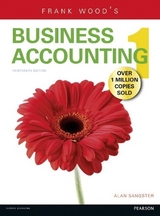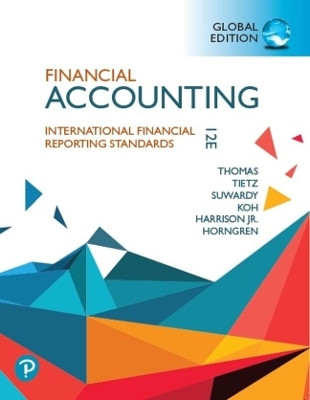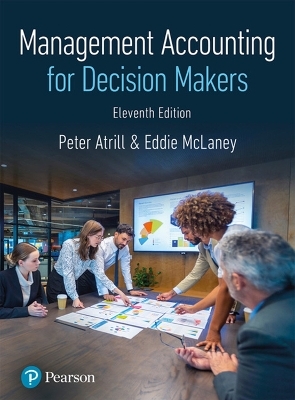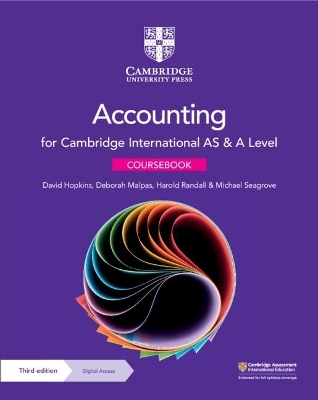
Frank Wood's Business Accounting Volume 1 with MyAccountingLab access card
Financial Times Prentice Hall
978-0-273-75928-7 (ISBN)
- Titel erscheint in neuer Auflage
- Artikel merken
Used on a wide variety of courses in accounting and business, both at secondary and tertiary level and for those studying for professional qualifications, Business Accounting Volume 1has become the world's best-selling textbook on bookkeeping and accounting.
With the addition of a MyAccountingLab, students using this twelfth edition will have even more support when preparing for their exams.
What is MyAccountingLab?
It is an online tutorial and assessment system that has been gaining popularity with students and instructors across the globe for over ten years. With more than 300,000 registered students in 2010 doing 4 million assignments, MyAccountingLab is the most effective and reliable learning solution for accounting available today. Features include:
A personalised study plan for each student
Guided solutions that take students step-by-step through solving a problem
Exam board-style questions
An eBook for quick reference
To learn more, visit www.myaccountinglab.com
Notes for Teachers and Lecturers
Notes for Students
PART ONE: Introduction to Double Entry Bookkeeping
1. The accounting equation and the statement of financial position
2. The double entry system for assets, liabilities and capital
3. Inventory
4. The effect of profit or loss on capital and the double entry system for expenses and revenues
5. Balancing-off accounts
6. The trial balance
PART TWO: The Financial Statments of Sole Traders
7. Income statements: an introduction
8. Statements of financial position
9. Income statements and statements of financial position: further considerations
10. Accounting concepts and assumptions
PART THREE: Books of Original Entry
11. Books of original entry and ledgers
12. The banking system in the UK
13. Cash books
14. Sales day book and sales ledger
15. Purchases day book and purchases ledger
16. Returns day books
17. The journal
18. The analytical petty cash book and the imprest system
19. Value added tax
20. Columnar day books
21. Employees' pay
22. Computers and accounting
23. Computerised accounting systems
PART FOUR: Adjustments for Financial Statements
24. Capital expenditure and revenue expenditure
25. Bad debts, allowances for doubtful debts, and provisions for discounts
26. Depreciation of non-current assets: nature and calculations
27. Double entry records for depreciation
28. Accruals and prepayments and other adjustments for financial statements
29. The valuation of inventory
30. Bank reconciliation statements
31. Control accounts
32. Errors not affecting the balancing of the trial balance
33. Suspense accounts and errors
Scenario questions
PART FIVE: Special Accounting Procedures
34. Introduction to accounting ratios
35. Single entry and incomplete records
36. Receipts and payments accounts and income and expenditure accounts
37. Manufacturing accounts
38. Departmental accounts
39. Statements of cash flows
40. Joint venture accounts
PART SIX: Partnership accounts and company accounts
41. Partnership accounts: an introduction
42. Goodwill for sole traders and partnerships
43. Revaluation of partnership assets
44. Partnership dissolution
45. An introduction to the financial statements of limited liability companies
46. Purchase of existing partnership and sole traders' businesses
PART SEVEN: An Introduction to Financial Analysis
47. An introduction to the analysis and interpretation of accounting statements
PART EIGHT : An Introduction to Management Accounting
48. An introduction to management accounting
APPENDICES
1. Answers to review questions
2. Answers to multiple-choice questions
3. Glossary
Index
| Erscheint lt. Verlag | 11.8.2011 |
|---|---|
| Verlagsort | Harlow |
| Sprache | englisch |
| Maße | 191 x 247 mm |
| Gewicht | 1360 g |
| Themenwelt | Wirtschaft ► Betriebswirtschaft / Management ► Rechnungswesen / Bilanzen |
| ISBN-10 | 0-273-75928-0 / 0273759280 |
| ISBN-13 | 978-0-273-75928-7 / 9780273759287 |
| Zustand | Neuware |
| Informationen gemäß Produktsicherheitsverordnung (GPSR) | |
| Haben Sie eine Frage zum Produkt? |
aus dem Bereich



